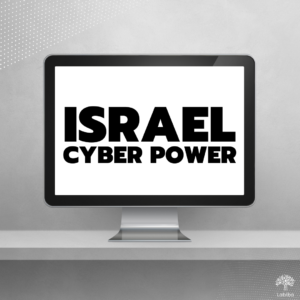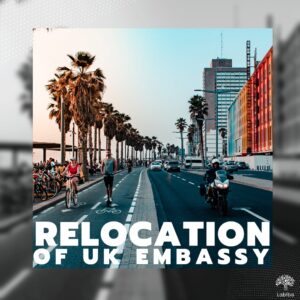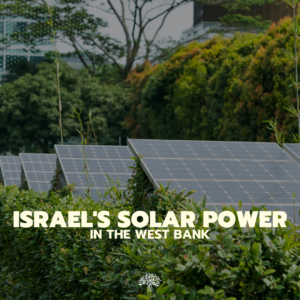Since the first day of the Palestinian territory occupation, the Israeli forces extended their control not only on the administration and the population but also over water, fossil, and mineral resources. Fossil resources in particular have the potential to meet the basic Palestinian needs for energy supply and export revenues, thus being the dispute for oil and gas reserves between the parties still alive. Under the pretence of safety, the restrictions on trade and on access to resources set by Israel, along with a more-than-a-decade-long blockade of Gaza, have impeded the exploitation of this resource-rich land, restraining the possibilities of economic growth and development of Palestinian society.
The Levant basin is rich in fossil reserves: a 2010 survey released by the United States Geological Survey (USGS) assesses three main geological units and estimates that the stored volumes in the reserve amount to 1689 million barrels of oil (MMBO) and 122378 billion cubic feet (BCF) of gas; combined they make around 20000 TWh of possible electricity production, an output that could provide energy to a city of more than 100 million inhabitants for 20 years. Within the Palestinian areas, three main fields have been identified offshore (e.g., Gaza Marine, Border…) and others inland (Meged field in area C of the West Bank).
By International Law the right of exploitation of natural resources (as a mean of economic self-determination) within a territory is recognized to the nation who holds sovereignty over that territory. Since Palestine is a land under belligerent occupation, bodies of international law are slightly different, but the principle of self-determination is still present; for instance, the 1907 Hague Regulations states: “If, as a result of war action, a belligerent occupies territory of the adversary, he does not, thereby, acquire the right to dispose of property in that territory, except according to the strict rules laid down in the [Hague] Regulations. The economy of the belligerently occupied territory is to be kept intact.” However, the events show that this right has not been preserved.
Within the bounds of the 1995 Israeli-Palestinian Interim Agreement on the West Bank and the Gaza Strip, Palestine agreed on holding maritime jurisdiction on a layer of over 20 nautical miles from its coast.
Despite the clear size difference of the area compared to what is internationally recognized as Exclusive Economic zone (EEZ, defined as 200 nm from the coast) and to the Israeli EEZ itself (in the picture, shown in red), the Agreement looked very promising for future cooperation.As stated in ANNEX III of the Declaration of Principles on Interim Self-Government Arrangements: “Cooperation in the field of energy, […] which will provide for the exploitation of oil and gas for industrial purposes, particularly in the Gaza Strip and in the Negev, and will encourage further joint exploitation of other energy resources.”
In November 1999, the Palestinian National Authority signed a 25-year gas exploration contract with British Gas Group (BG Group). They announced the discovery of the Gaza Marine field and started drilling. A few months later the first gas well was discovered, thus representing a potential windfall for Palestinian people. Negotiations between Palestine and Israel began that year, and after some hesitations and some position taking-and-revision, in 2007 Israel signed an agreement to buy annually a fixed gas amount from the Palestinian authority.
However, the blockade imposed in the same year on the Gaza strip cracked the synergies between the parties and made any access to the gas field more difficult for Palestinian authorities. For instance, the 2008 Israeli military operation in Gaza ended with Israel controlling Palestinian natural gas fields. This had significant consequences for the control of the strategic offshore natural gas reserves. Over the years, Israeli’s navy has forcibly restricted Palestinian access to Gaza’s maritime space to a 6 nautical miles limit from the 20 nm agreed under the Oslo Accords, to prevent efficient exploitation of Palestinian gas field. In 2019 Israel kept enforcing the blockade with tens of gunboats that set limit on how far the fishermen can sail out into the Mediterranean Sea, again with the aim of securing the resources by impeding external access.
The losses borne by the Palestinian people under occupation are not restricted to offshore fields: Israel has taken control of the Meged oil and natural gas field claiming that the field lies west of the armistice line of 1948; however, most of the reservoir is located below the Palestinian territory.
In 2020, through a document submitted to International Criminal Court, Palestine attempted to claim rights over a 200 nautical miles continental shelf and EEZ, as prescribed by the 1982 UN Convention on the Law of the Sea, meaning a potential (and legitimate) increase of Palestinian jurisdiction over resources in the territory. However, the prosecutor disagreed. In a commentary written on the behalf of the Norwegian Centre for the Law of the Sea, it’s stressed how the prosecutor reply may be disappointing and how the rights of the Palestinian people over offshore natural resources need to be safeguarded.
In February 2021 Palestine finally signed an MoU with Egypt to develop the infrastructure of Gaza Marine Gas Field, after years of Israeli objections which have obstructed any possible agreement: the hope is that this will pave the way for the solution of the energy crisis in the Gaza Strip. Facilitating the gas supply will contribute to strengthening Palestinian reliance on national resources and thus independence in the energy sector: by feeding the new Janine power plant, the gas could provide energy for a capacity of 3700 GWh per annum, satisfying 40% of Palestine’s electricity needs.
Silvia Pizzigoni




